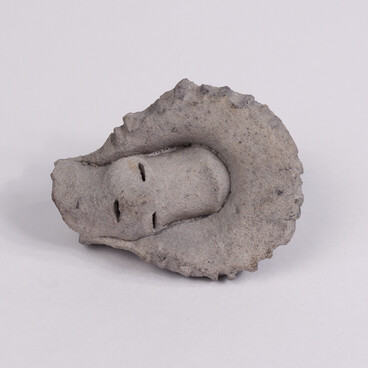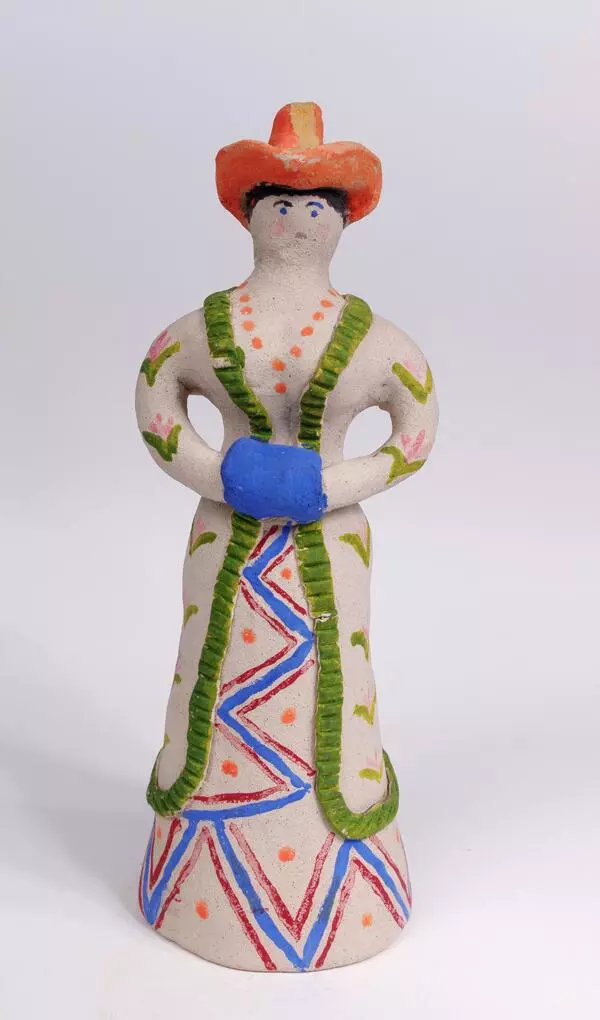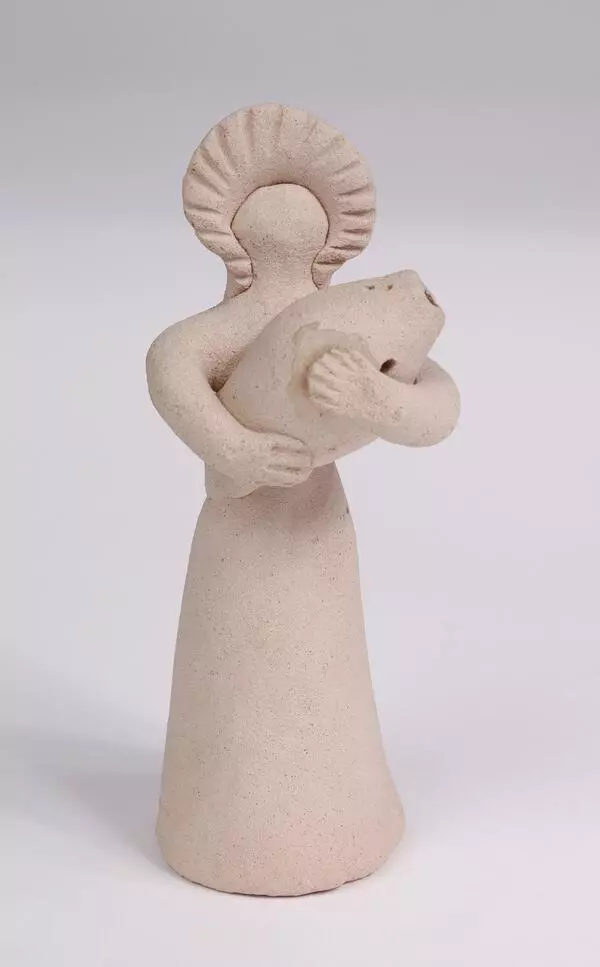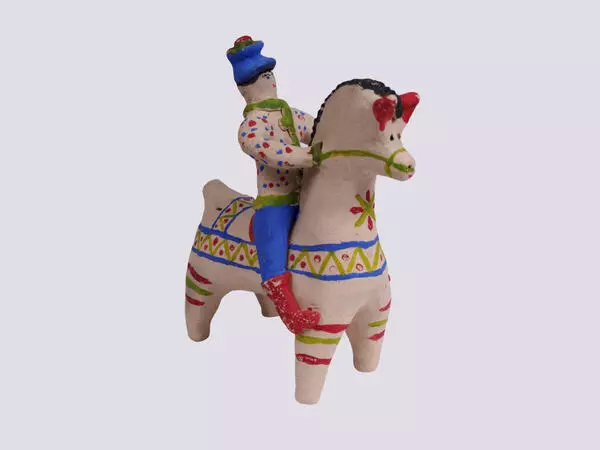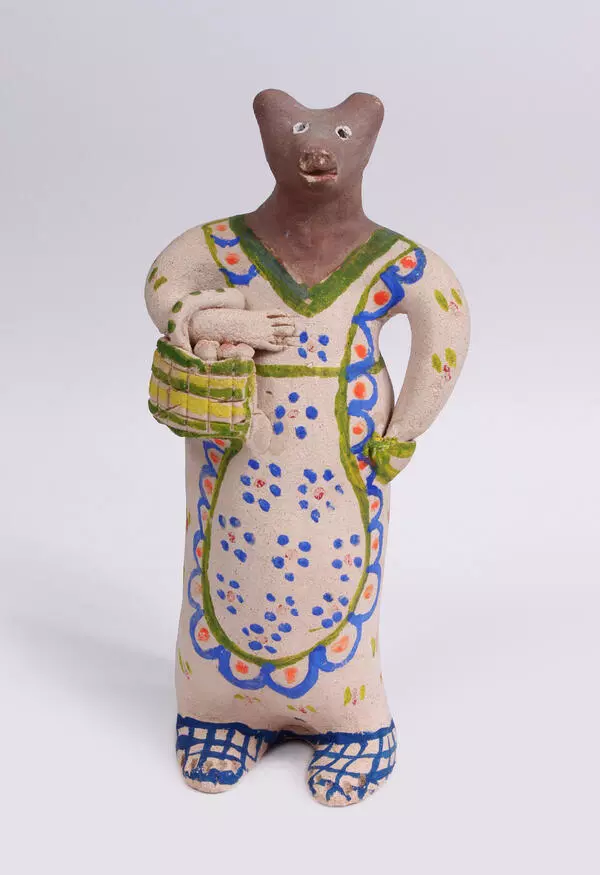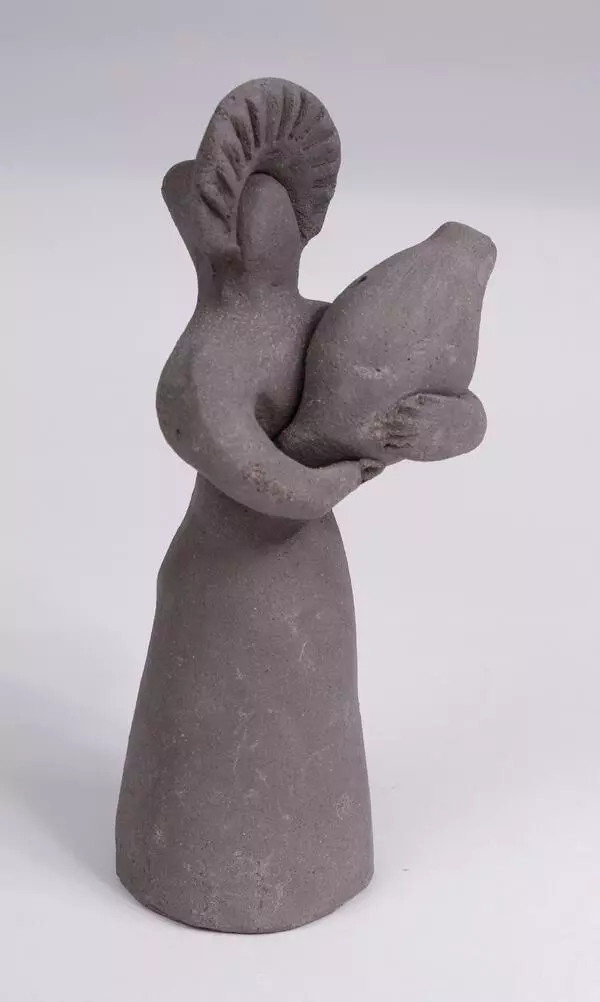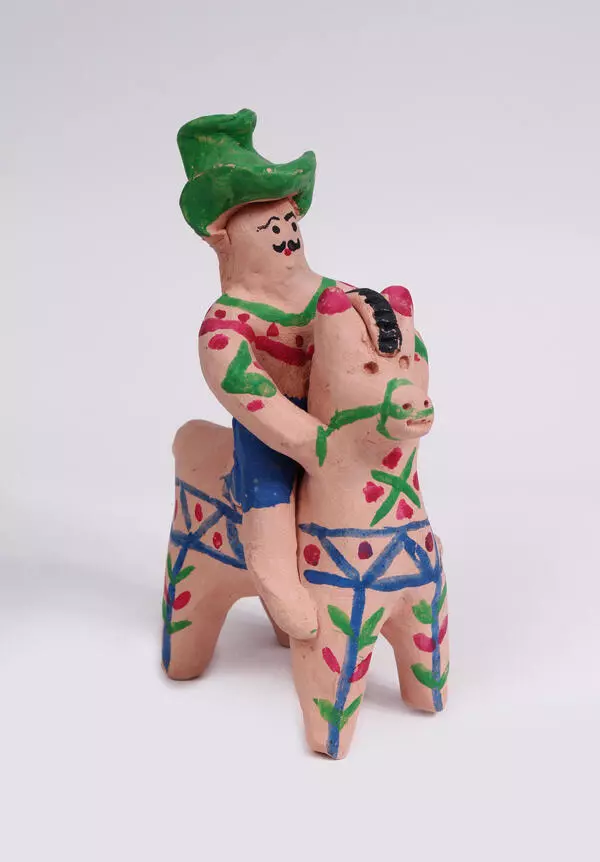This cow was made in 1989 by the Goncharova sisters — Olga and Natalia. The craftswomen did not seek to depict the cow in motion: the toy stands firmly on all four legs and holds its head straight. The head is crowned with two massive horns extending upwards.
In many cultures, a cow is a symbol of fertility, power, prosperity, and well-being. The Slavic people considered a cow to be associated with the goddess of the sky and Mother Earth. In the old days, married Russian women even wore ‘horned’ headdress called ‘kichka’. It imitated a cow’s horns and symbolized the fertility of the woman who wore it. A cow-toy could be given as a gift to a 4–5 month child.
Despite the great importance of a cow in Russian culture, such toys were quite rare in Stary Oskol. The only toy cow that was found on the territory of Stary Oskol was made in the 18th century. However, fragments of horns, that could be those of a cow, were found during excavations. The hereditary craftswomen Olga and Natalia Goncharova stated that their mother Anastasia Pavlovna used to make small clay cows. And that was the reason why they decided to reproduce a cow figurine in their art.
The researcher Boris Shevchenko said that the toys that Anastasia Gonchrova, the mother of the two craftswomen, made were also once discovered during the excavation. In the 1990s, around a hundred figurines were found in the area where the Goncharovs’ home was. The sisters recognized their mother’s and their older sister Evdokia’s works (of the period from the end of the 19th to the beginning of the 20th century) in most of the finds.
In the 1980s, the major discovery was the works of the Goncharovsa sisters themselves. They managed to remember the traditional pottery techniques in Stary Oskol that they learned when they were only children. Their hand-made clay whistles were different from the Russian peasant toys and the city toys: researchers categorized them as the rarest (Sergiev) Posad toys (Sergiev Posad is a Russian town that has a long history of toy-making). Before the toys made by the sisters were classified as Posad toys, it was assumed that Posad toys were no longer made in Russia.
In December 2016, The Ministry of Industry and Trade of the Russian Federation registered the Stary Oskol folk toy as ‘a folk craft of great artistic value’. It meant that it became recognized as the famous Dymkovo, Khokhloma, Gzhel, and other folk arts and crafts of Russia.
In many cultures, a cow is a symbol of fertility, power, prosperity, and well-being. The Slavic people considered a cow to be associated with the goddess of the sky and Mother Earth. In the old days, married Russian women even wore ‘horned’ headdress called ‘kichka’. It imitated a cow’s horns and symbolized the fertility of the woman who wore it. A cow-toy could be given as a gift to a 4–5 month child.
Despite the great importance of a cow in Russian culture, such toys were quite rare in Stary Oskol. The only toy cow that was found on the territory of Stary Oskol was made in the 18th century. However, fragments of horns, that could be those of a cow, were found during excavations. The hereditary craftswomen Olga and Natalia Goncharova stated that their mother Anastasia Pavlovna used to make small clay cows. And that was the reason why they decided to reproduce a cow figurine in their art.
The researcher Boris Shevchenko said that the toys that Anastasia Gonchrova, the mother of the two craftswomen, made were also once discovered during the excavation. In the 1990s, around a hundred figurines were found in the area where the Goncharovs’ home was. The sisters recognized their mother’s and their older sister Evdokia’s works (of the period from the end of the 19th to the beginning of the 20th century) in most of the finds.
In the 1980s, the major discovery was the works of the Goncharovsa sisters themselves. They managed to remember the traditional pottery techniques in Stary Oskol that they learned when they were only children. Their hand-made clay whistles were different from the Russian peasant toys and the city toys: researchers categorized them as the rarest (Sergiev) Posad toys (Sergiev Posad is a Russian town that has a long history of toy-making). Before the toys made by the sisters were classified as Posad toys, it was assumed that Posad toys were no longer made in Russia.
In December 2016, The Ministry of Industry and Trade of the Russian Federation registered the Stary Oskol folk toy as ‘a folk craft of great artistic value’. It meant that it became recognized as the famous Dymkovo, Khokhloma, Gzhel, and other folk arts and crafts of Russia.

